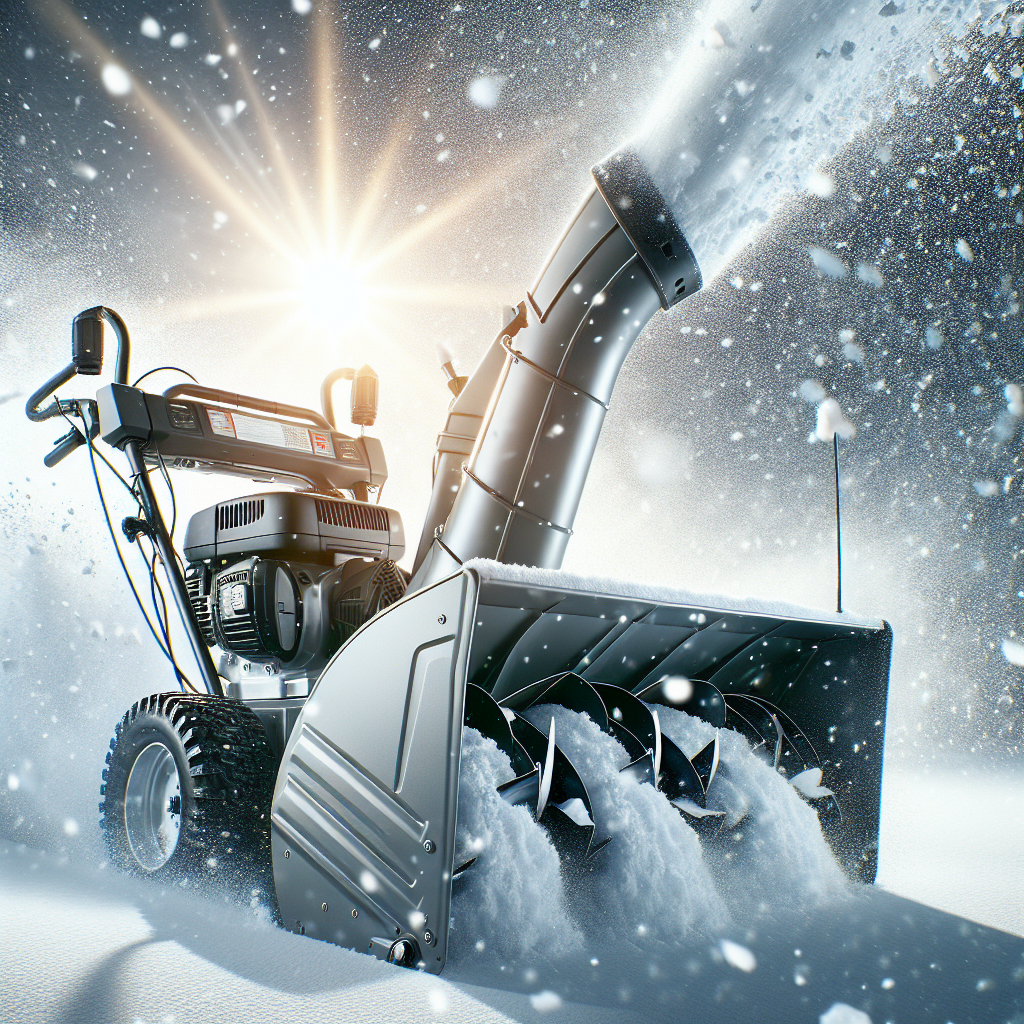Imagine waking up one winter morning, opening your curtains, and being greeted by a blanket of snow so thick it almost feels like you’re in a fairytale. The question that immediately comes to mind is: can your trusty 2 stage snow blower handle this winter wonderland? In this article, we will explore just how much snow a 2 stage snow blower can handle, so you can confidently tackle even the heaviest snowfalls Mother Nature throws your way. Get ready to take charge of your winter!
Understanding 2-Stage Snow Blowers
What is a 2-stage snow blower?
A 2-stage snow blower is a powerful machine designed to efficiently remove snow from driveways, sidewalks, and other outdoor spaces. Unlike single-stage snow blowers, which rely solely on an auger to collect and propel snow, 2-stage snow blowers utilize an additional impeller to throw the snow at a greater distance. This two-stage process allows the machine to handle heavier and deeper snow with ease.
How does a 2-stage snow blower work?
In a 2-stage snow blower, the auger’s main function is to collect the snow and feed it into the impeller. The auger spins rapidly, breaking down the snow and ice, while the impeller, powered by the engine, forcefully propels the snow out of the discharge chute. This two-stage system enables the snow blower to handle larger volumes of snow and throw it farther away, providing a cleaner and more efficient snow clearing experience.
Advantages of using a 2-stage snow blower
There are several advantages to using a 2-stage snow blower over other types of snow removal equipment. Firstly, the dual-stage process allows the machine to handle heavier and wetter snow, which can be challenging for single-stage snow blowers. Secondly, the ability to throw the snow farther reduces the need for manual labor, as the snow can be discharged away from walkways and driveways. Additionally, 2-stage snow blowers are generally more powerful, making them suitable for larger areas and thicker snow accumulations. Overall, these snow blowers offer increased efficiency, reliability, and convenience when compared to their single-stage counterparts.
Factors Influencing the Capacity of 2-Stage Snow Blowers
Engine Power and Size
The engine power and size of a 2-stage snow blower play a crucial role in determining its snow clearing capacity. The more powerful the engine, the greater the machine’s ability to handle heavy and deep snow. Engine power is typically measured in horsepower (HP), with higher HP ratings indicating more robust performance. However, it is important to consider the size of the area to be cleared when selecting the appropriate engine power. For smaller residential properties, a snow blower with an engine power of around 5-8 HP is usually sufficient, while larger areas may require engines with 10 HP or more.
Clearing Width
The clearing width of a 2-stage snow blower refers to the width of the path it can clear in a single pass. A wider clearing width allows for faster and more efficient snow removal, reducing the number of passes required to clear an area. The size of the clearing width depends on the specific model of the snow blower, with typical ranges falling between 20 and 30 inches. When choosing the ideal clearing width, consider the size of the area you need to clear, as well as any obstacles or narrow paths that may require a narrower clearing width for maneuverability.
Intake Height
Intake height refers to the maximum height of snow that a 2-stage snow blower can effectively handle. A higher intake height is beneficial when dealing with deep snow accumulations. It allows the machine to collect and clear more snow at once, reducing the number of passes and saving time and effort. However, it’s important to note that a higher intake height may also result in reduced maneuverability in certain situations, such as when clearing snow from tight or narrow spaces. Consider your specific needs and the average snow depth in your area when selecting the appropriate intake height for your 2-stage snow blower.
Type and Quality of Snow
The type and quality of snow can have a significant impact on the snow blower’s performance and clearing capacity. Different snow types, such as light and fluffy snow, packed snow, or wet and heavy snow, require different approaches and may affect the machine’s efficiency. Generally, 2-stage snow blowers are more effective at handling heavier and wetter snow, as the auger and impeller system can break it down and propel it further. It’s important to consider the typical snow conditions in your area and choose a snow blower that is well-suited to handle the specific type of snow you are likely to encounter.
Terrain and Surface Conditions
The terrain and surface conditions where the snow blower will be used also play a role in determining its snow clearing capacity. Steep slopes or inclines can pose challenges, as the weight and traction of the machine may be affected. In such cases, it is advisable to select a snow blower with a powerful engine and excellent traction features, such as heavy-duty or snow-specific tires. Similarly, uneven or gravel surfaces require careful consideration, as the snow blower’s auger and impeller system may be impacted by the rough terrain. When clearing snow on uneven or gravel surfaces, opting for a snow blower with adjustable skid shoes or a floating auger design can help improve performance and prevent damage to the machine.
Additional Features to Enhance Snow Clearing Capacity
Auger Design and Strength
The design and strength of the auger in a 2-stage snow blower can greatly impact its snow clearing performance. The auger is responsible for breaking down the snow and feeding it into the impeller for discharge. A robust, well-designed auger can handle tough snow conditions, such as heavy and icy snow, with ease. It’s essential to choose a snow blower with durable auger blades and construction to ensure longevity and efficient performance.
Impeller System
The impeller system of a 2-stage snow blower is responsible for propelling the snow out of the discharge chute. A well-designed impeller can significantly enhance the machine’s throwing distance, allowing for efficient snow removal. Look for a snow blower with a powerful impeller and a well-built discharge chute to maximize the effectiveness of the snow clearing process.
Clearing Distance and Discharge Chute
The clearing distance is a measure of how far the snow blower can throw the cleared snow. It is influenced by multiple factors, including the power of the engine, the design of the impeller, and the condition of the snow being cleared. The greater the clearing distance, the more efficient the snow blower is at removing snow from the desired area. Additionally, consider the adjustability and maneuverability of the discharge chute, as it allows you to control the direction and angle at which the snow is thrown. These features can significantly enhance the snow clearing capacity of a 2-stage snow blower.
Tire Traction and Maneuverability
Tire traction is crucial for effective snow clearing, as it ensures stability and control during operation. Different tire types are available for varying snow conditions, including standard tires, snow-specific tires, and even tracks for extreme conditions. Selecting the appropriate tire type based on the typical snow conditions in your area can greatly enhance the machine’s performance. Additionally, consider the maneuverability of the snow blower, especially if you have tight spaces or obstacles to navigate. Look for features such as easy steering, adjustable handles, and compact size to ensure efficient snow removal without compromising maneuverability.
In conclusion, understanding the capacity of 2-stage snow blowers requires considering various factors such as engine power, clearing width, intake height, snow type, terrain conditions, and additional features. By selecting a snow blower that aligns with your specific needs and snow conditions, you can ensure efficient and effective snow removal, making winter maintenance a more manageable task. Stay warm and enjoy the winter season with the power and convenience of a reliable 2-stage snow blower.

